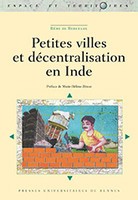Indian Art from Afghanistan: The legend of Sakuntala and the Indian Treasure of Eucratides at Ai Khanum
- Year :1996
- Pages :164
- Price :500Rs
- ISBN :81-7304-162-8
- Editor :Manohar CSH
The collection of Indian products in the treasury seems to prove that their presence at Ai Khanum has nothing to do with any commercial relations – the silk road having opened only later – but is to be connected with the military expedition of Eucratides. In fact, during the last years of his reign, Eucratides made a number of raids against the Indo-Greek territories on the southern slope of the Hindukush, probably against the well-known hellenistic king Menander. But the progression of the Graeco-Bactrian king was brutally halted by the sudden nomadic invasions of the Yueh-chih and the assassination of Eucratides around the year 145 BC. This date permits attributing the Indian objects illustrated here to the first half of the second century B.C. and to put them among the most ancient representatives of the Indian art.









